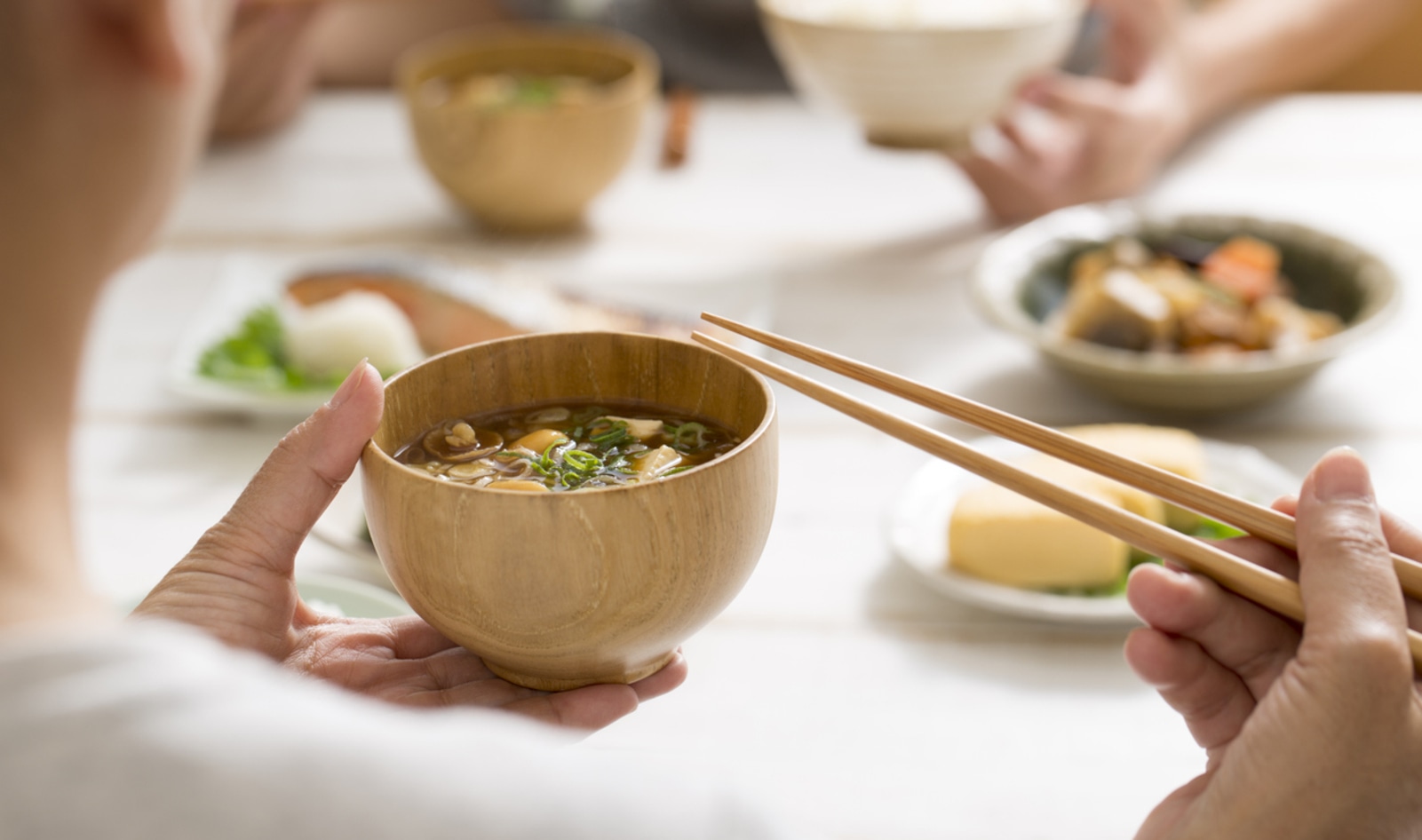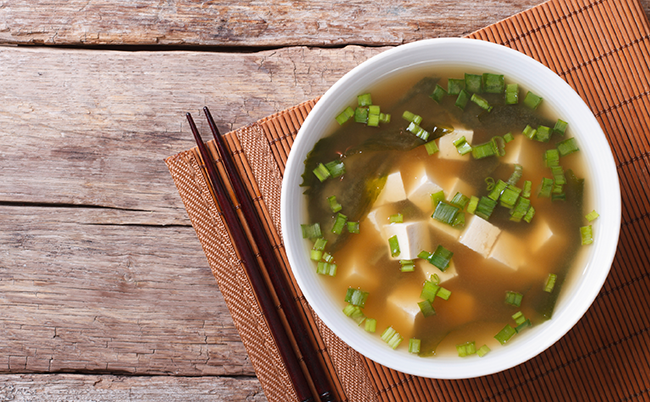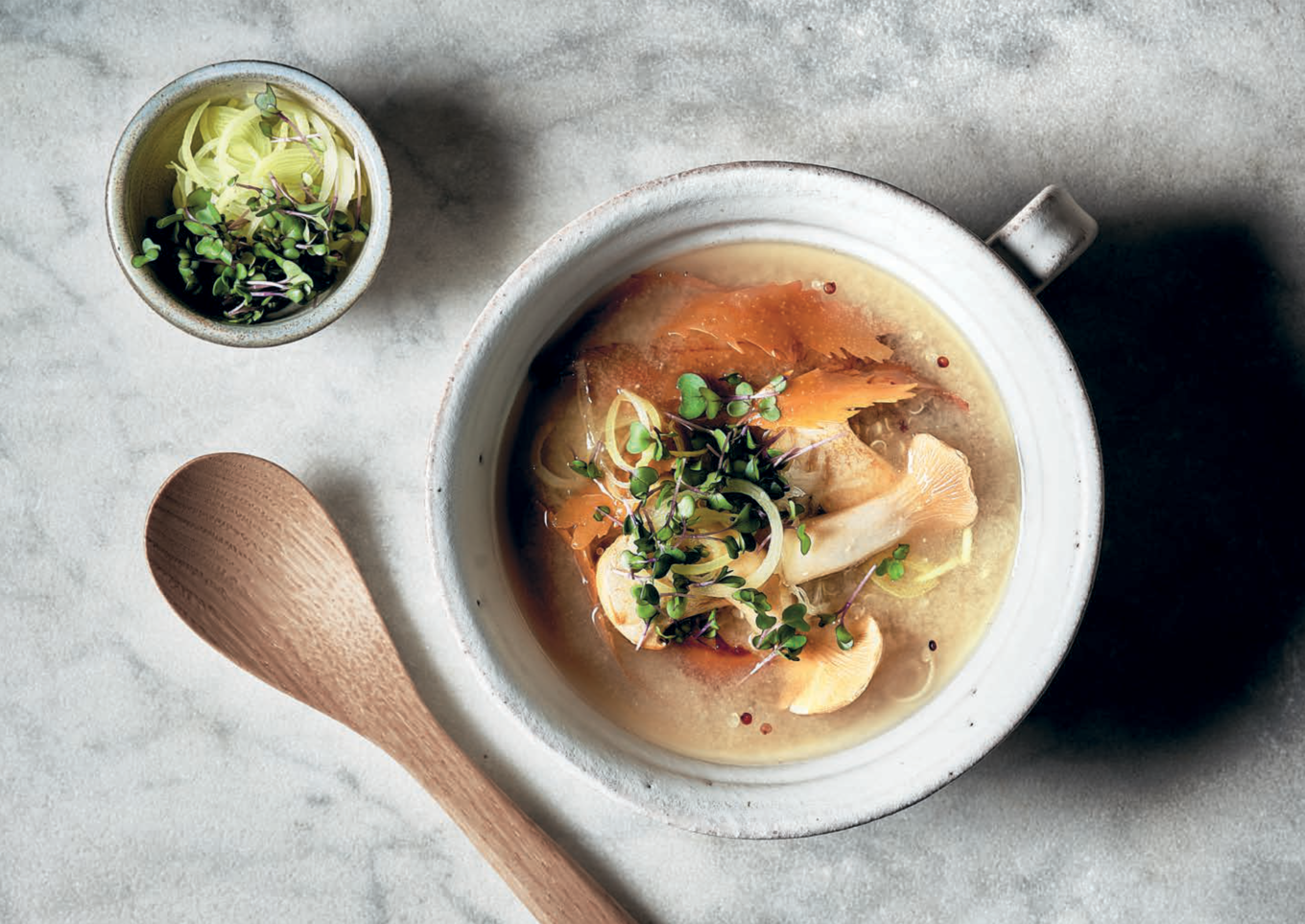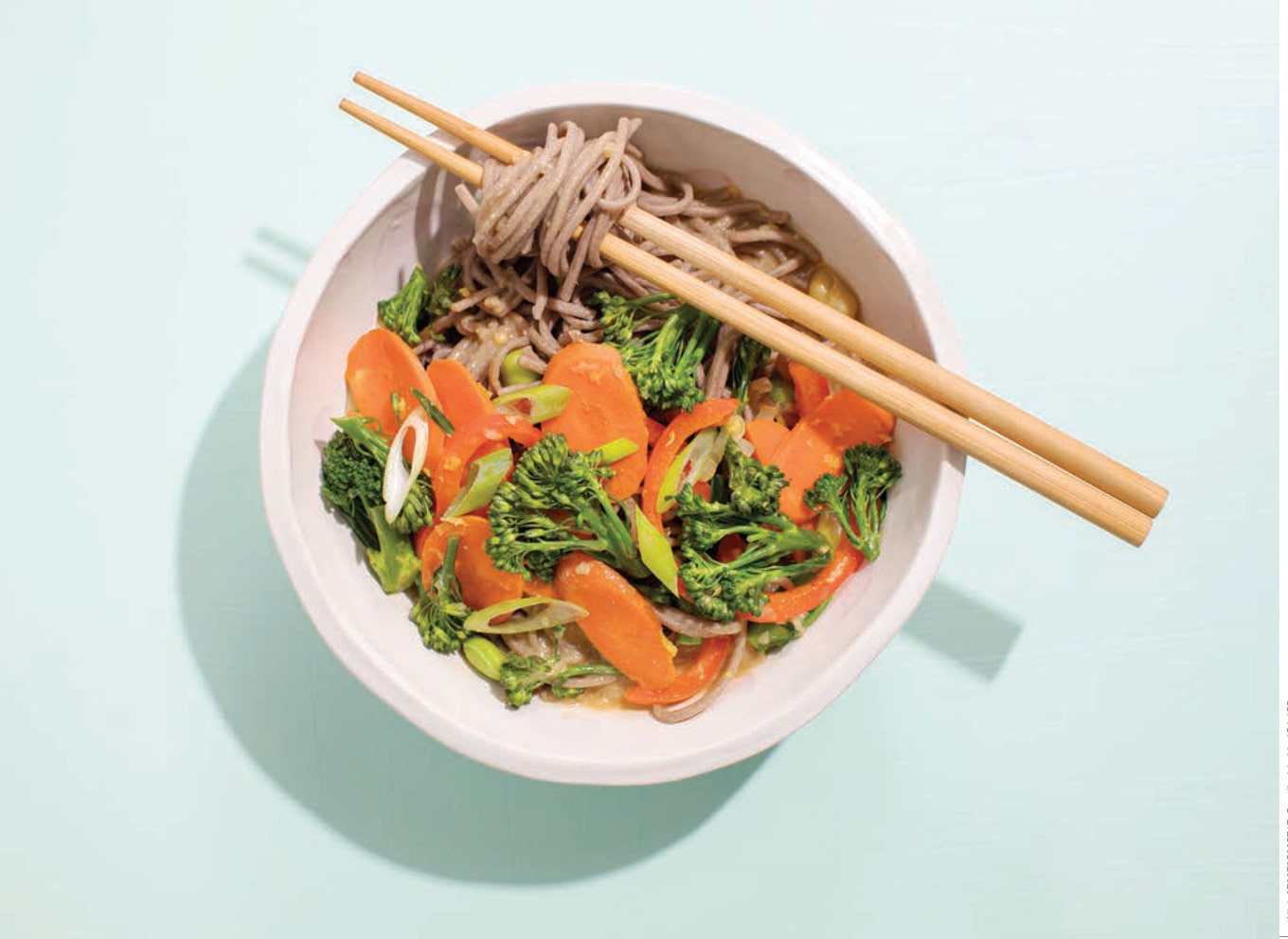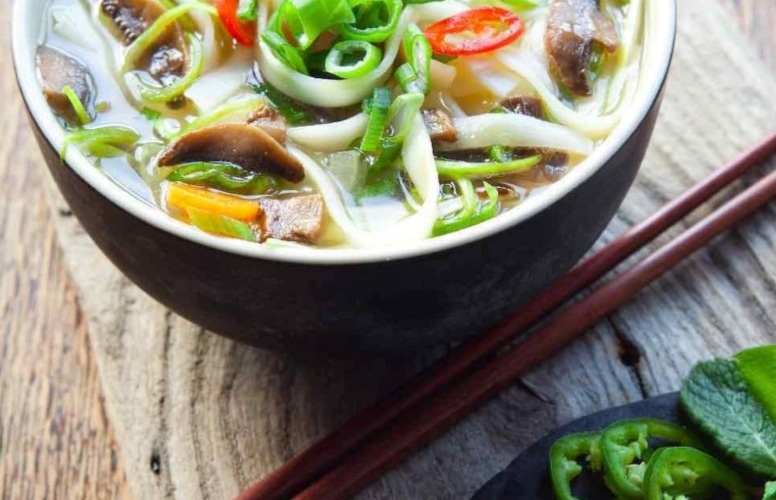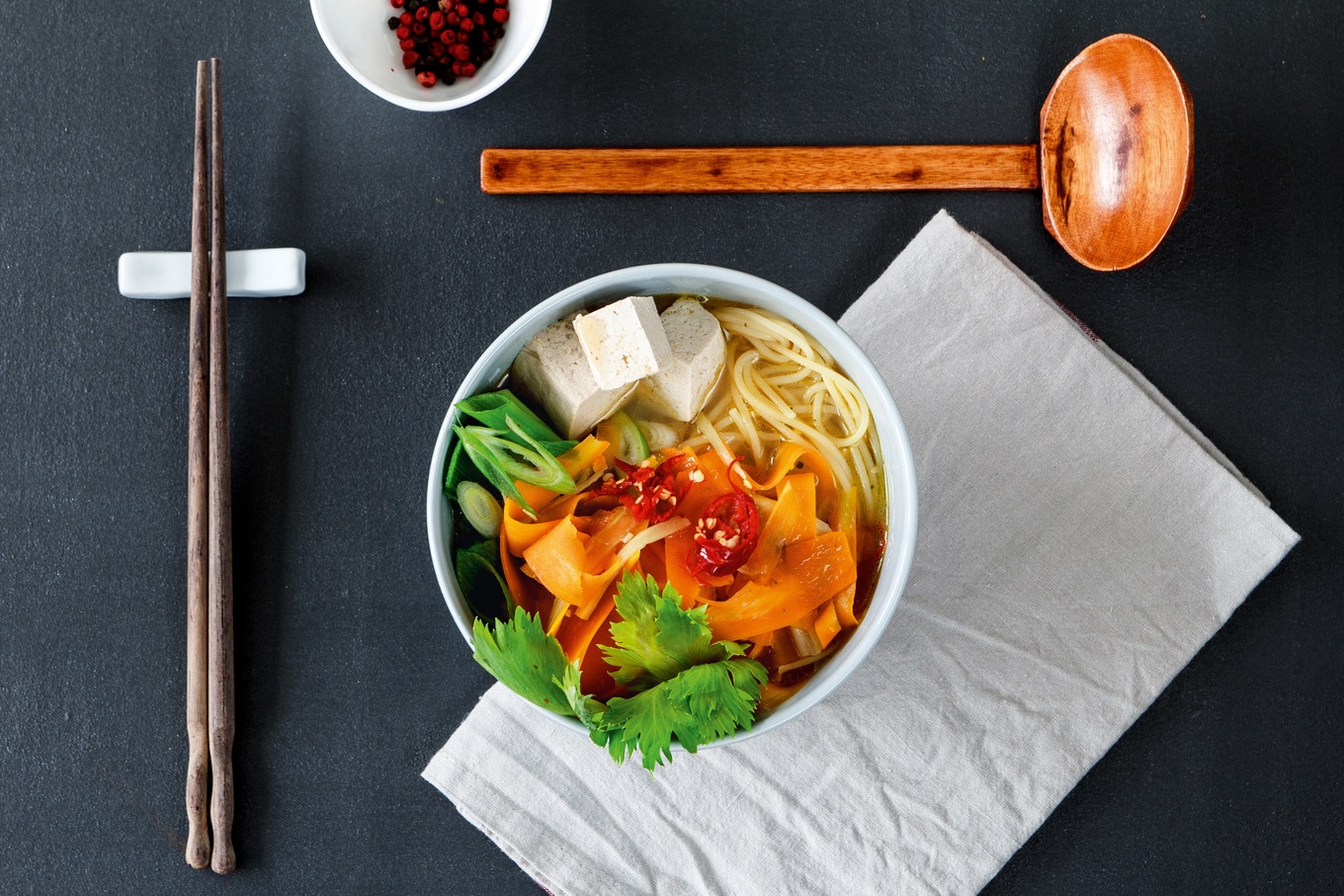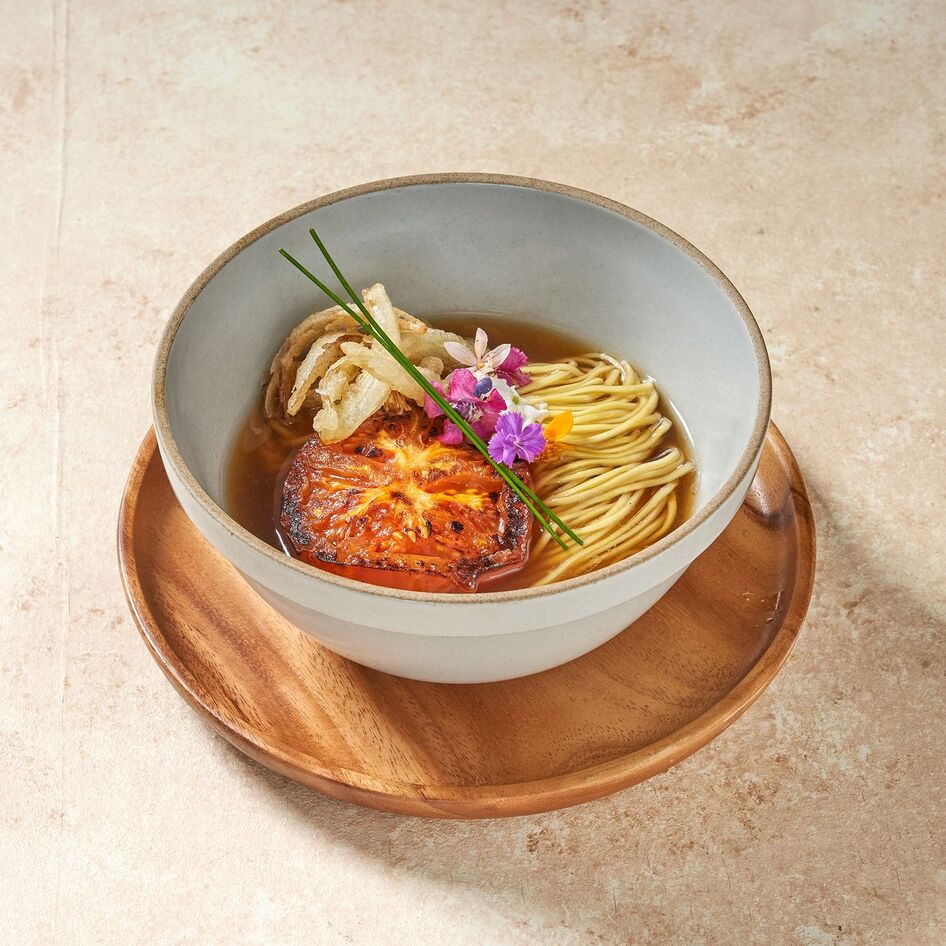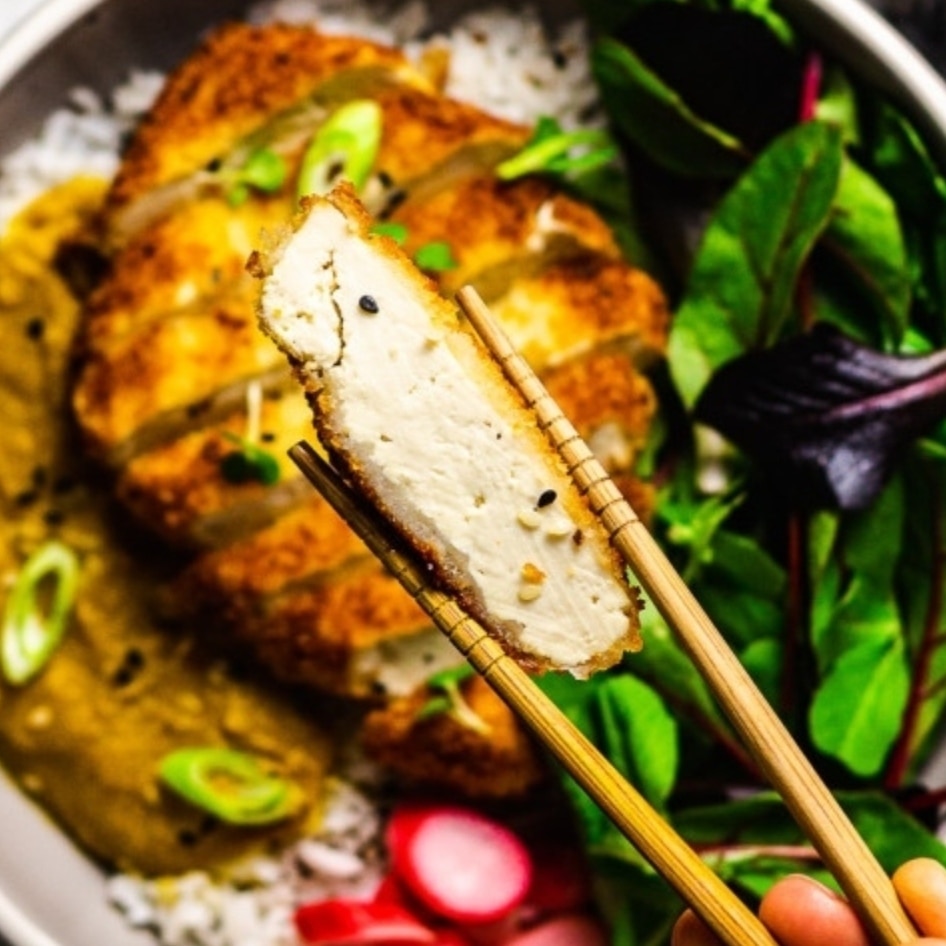In Japan, you’d be hard-pressed to find a person who doesn’t regularly eat miso soup. According to some reports, it’s eaten at least once a day by around three-quarters of the population. And it’s easy to see why: the broth is nourishing, warming, and renowned for its health benefits. But it also has a long history in Japan, which makes it more than just a nutritious dish. Miso soup is also about culture and identity.
Over the years, miso soup has also become popular in the West. If you sit down to eat at a Japanese restaurant in the US, you’ll always see the dish listed on the appetizer menu. But if you’ve got a taste for miso, it’s easy to make this nourishing broth at home too. We’ve gathered a few of our favorite vegan recipes below. But first: what is miso soup? Where did it come from? And why is it so good for you?
What is miso soup?
In its simplest form, miso soup is made with just two main ingredients: miso paste and dashi stock. The former comes in several different varieties, but the most common is rice miso (also known as kome miso). It’s a fermented paste made with soybeans, koji rice, and salt.
Dashi is a type of soup stock, and generally, this is made with kelp, shiitake mushrooms, bonito flakes (derived from skipjack tuna), and baby anchovies. Because the latter two ingredients come from fish, dashi is not always vegan. But it is possible to find (and make) vegan versions with just shiitake and kelp.
Many also choose to add extra ingredients to miso soup such as seaweed, vegetables, and tofu.
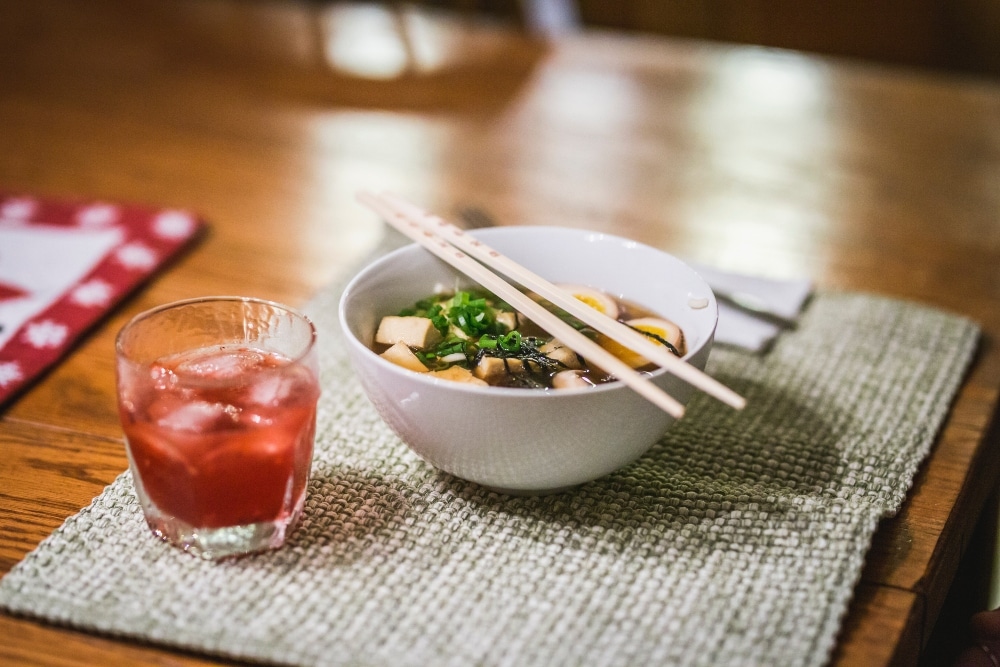 Unsplash
Unsplash
Miso soup history
For more than 1,000 years, people in Japan have eaten miso. But it wasn’t always accessible to everyone. In the Heian period, which ended in 1185, miso paste was reserved exclusively for the rich and elite. At that time, it was more than just food—it was a valuable commodity. In fact, it was even used to pay salaries, reports Marukome, one of Japan’s top miso producers.
During the following Kamakura period, the introduction of the pestle and mortar by Chinese Buddhist monks changed the whole miso game. Using these simple tools, the paste could be ground down and dissolved in water, resulting in soup (a dish that was subsequently loved and eaten frequently by samurai warriors).
Over the centuries, miso soup became accessible to all, not just the elite. By the time the 1800s rolled around, miso shops and restaurants were the norm in Tokyo (although back then it was called Edo).
For a meal with an ancient history, miso soup hasn’t struggled to fit into modern times. In fact, in 2022, the miso market was valued at nearly $68 billion. And by 2032, it’s expected to exceed $107 billion.
The benefits of miso soup
But why, exactly, is miso soup so popular? There are a few reasons. For one, it’s pretty tasty. And on a cold winter’s day, it’s warming and comforting. But it’s also very good for your health. It’s packed with nutrients, like protein, carbohydrates, manganese, vitamin K, copper, and zinc.
Because it’s made with fermented paste, miso soup is also a good source of probiotics. Research suggests that these forms of good bacteria are good for our gut health, and can help to improve digestion and reduce painful symptoms, like constipation and bloating. Probiotic-rich diets are also associated with improved immune system function.
BECOME A VEGNEWS VIP: Get exclusive product deals, freebies, and perks galore!
But there is one catch with miso soup: it’s pretty salty. In fact, one serving contains up to two grams of salt. If you need to reduce the salt in your diet, it might be an idea to avoid miso, unfortunately. But that said, research has also suggested that the sodium in miso might not be as detrimental to health as the salt in other foods.
In 2012, one study compared miso to foods like processed meat, salted fish, and pickled foods. While all three of the latter increased the risk of stomach cancer, the findings indicated that miso soup didn’t. “This may be because the carcinogenic effects of the salt in miso soup are counteracted by the anti-carcinogenic effects of the soy, effectively canceling out the risk,” notes Michael Greger, MD, FACLM, on his site NutritionFacts.org.
Vegan miso soup recipes
If you’ve found yourself craving a nourishing bowl of miso, there are many ways you can enjoy it. It’s delicious on its own, or with added plant-based ingredients, like seaweed, mushrooms, or ramen noodles. For inspiration, here are a few of our favorite vegan takes on the traditional Japanese dish.
1 Almond Miso Soup
If you want a quick, light, nutrient-rich lunch, this almond miso soup recipe could be the perfect fit. It’s easy to make, and thanks to the addition of almond butter, it’s nice and creamy, too.
Get the recipe
2 Miso Soup With King Oyster Mushrooms, Quinoa, and Seaweed
Once you’ve made your miso soup with vegan dashi stock, it’s time to start adding in the extras. Nutrient-rich quinoa is a great choice, and king oyster mushrooms also bring a nice meaty texture to the broth. Seaweed also adds that slightly fishy taste of traditional dashi, just without the actual fish.
Get the recipe
3 Vegan Soba Noodles With Spicy Miso Broth
For all the flavor of miso, but with a little added sustenance, whip up this tasty broth with buckwheat noodles and all of your favorite vegetables. The ingredients list is just a guide really, you can add whatever you like—or whatever you need to use up in your fridge!
Get the recipe
4 Miso Mushroom “Chicken” Soup
One popular way to enjoy miso soup is with added chicken. But if you don’t eat meat, you don’t have to miss out. Mushrooms are an excellent substitute thanks to their meaty taste and texture, and they’re packed with nutrients.
Get the recipe
5 Speedy Vegan Spicy Miso Ramen
This is a great recipe to bookmark for days when you’re in a rush. Plus, it’s not only quick and easy to make, but it’s protein-packed, flavorful, and satisfying.
Get the recipe
For more plant-based stories like this, read:
JUMP TO ... Latest News | Recipes | Guides | Health | Subscribe

